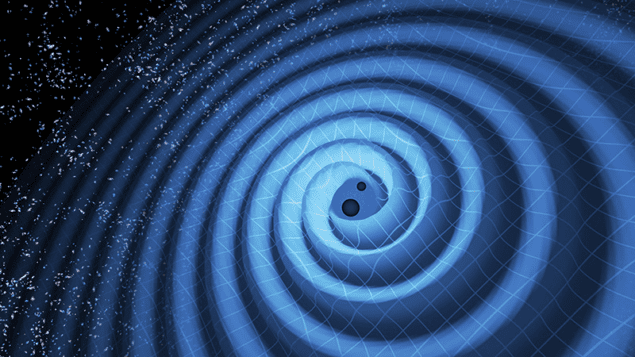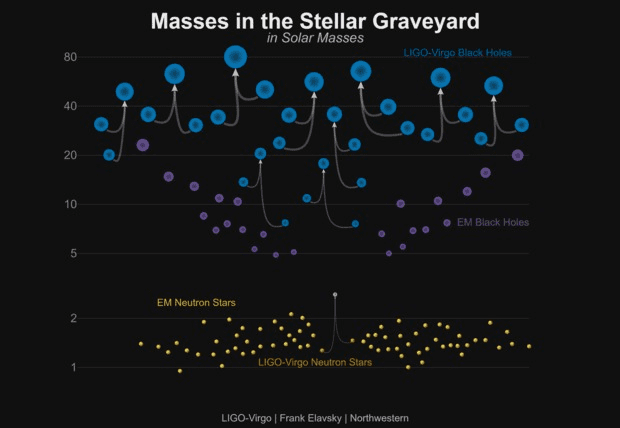

Physics working on the LIGO and Virgo gravitational-wave detectors have announced the observation of four more black hole mergers. The events have come to light after additional analysis was performed on data gathered during the second run of the detectors in July and August of 2017.
The observations were made at around the same time as the first-ever detection of gravitational waves from a merger of two neutron stars – an event called GW170817. Indeed, six separate gravitational-wave events were seen in less than one month of observation time by the detectors.
The two LIGO detectors are in the US – one in Livingston, Louisiana and the other in Hanford, Washington. The Virgo detector is located near Pisa, Italy. Since 2015, the gravitational-wave detectors have observed 10 black-hole mergers and one neutron-star merger.
“In less than three years gravitational wave detections have given us direct evidence of the existence of black holes and binary neutron star collisions,” say LIGO–Virgo team member Sheila Rowan of the University of Glasgow.
Massive merger
The most massive of the newly announced mergers is dubbed GW170729 and was spotted on 29 July 2017 (the number indicates the year, month and day of the observation). It is the largest merger seen so far and is believed to have involved the coalescence of two black holes, one weighing in at more than 50 solar masses and the other more than 34 solar masses. The event happened about 5 billion years ago and created an 80 solar mass black hole and converted about 5 solar masses into gravitational waves – some of which made the long journey to Earth.
GW170729 was seen by both LIGO detectors, but not by Virgo, which was not running at the time. Also seen by just LIGO is the newly-announced GW170809, which created a black hole of about 50 solar masses.
Also in the catalogue of new observations is GW170818 was seen by LIGO and Virgo just one day after the GW170817 neutron-star merger and involved creation of a black hole of about 55 solar masses. The fourth new merger is called GW170823 and created a black hole of about 60 solar masses.
Multimessenger astronomy
An event seen by all three detectors is significant because it gives astronomers a much better idea of where in the sky the merger occurred. This is important for multimessenger astronomy, whereby telescopes are pointed at the source of gravitational waves to try to detect electromagnetic radiation – and possibly neutrinos – created by the merger. While additional signals have yet to been seen from black-hole mergers, radiation ranging from radio waves to gamma rays has been observed in the aftermath of the GW170817 neutron star merger. This provides important insights into the object (most likely a spinning black hole) that was created by the merger.

Spectacular collision of two neutron stars observed for first time
The LIGO and Virgo detectors are currently being upgraded and their third run will begin next year. “It’s an incredibly exciting time,” says David Shoemaker of the Massachusetts Institute of Technology, who is spokesperson for the LIGO Scientific Collaboration. “The next observing run, starting in Spring 2019, should yield many more gravitational-wave candidates, and the science the community can accomplish will grow accordingly.”
The new events, plus previously announced detections are described in two preprints on arXiv. One preprint catalogues all mergers seen so far, while the other looks specifically at what LIGO–Virgo tells us about binary black hole populations in the universe.
- There is much more about the detection of gravitational waves in the second episode of the Physics World 30th anniversary podcast series in which Andrew Glester speaks to scientists who played crucial roles in building the LIGO detectors and analysing the signals they produce.



